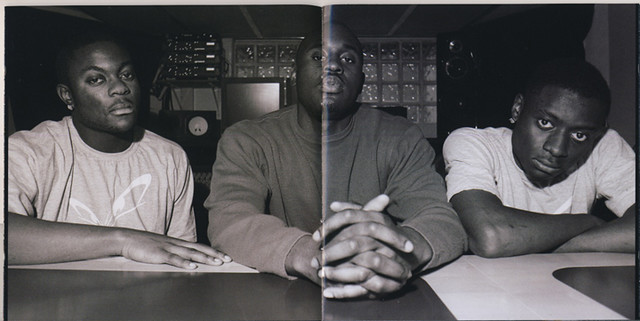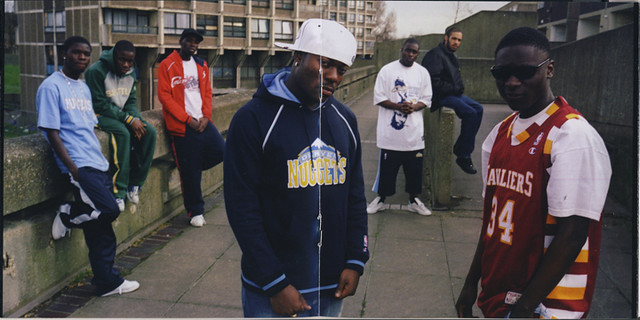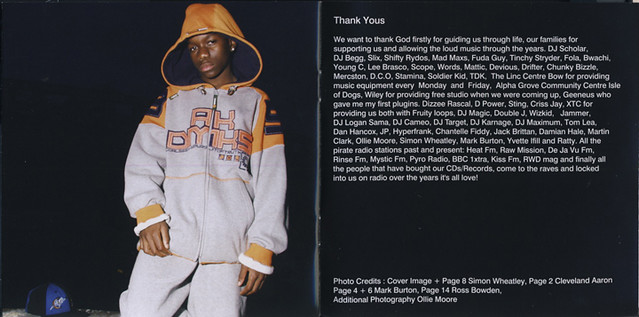http://bntl.co.uk/site/?s=Bob+Sheard
+ 1
Friday, 28 December 2012
Wednesday, 26 December 2012
blog this shit.
http://hypebeast.com/2012/12/hypetrak-tv-azealia-banks-look-of-the-future
http://hypebeast.com/2012/12/christian-louboutin-2013-spring-rantus-orlato-flat-multicolor
http://hypebeast.com/2012/12/streetsnaps-marcus-paul
http://www.youtube.com/watch?feature=player_embedded&v=ieETY_OrbQg
http://hypebeast.com/2012/12/christian-louboutin-2013-spring-rantus-orlato-flat-multicolor
http://hypebeast.com/2012/12/streetsnaps-marcus-paul
http://www.youtube.com/watch?feature=player_embedded&v=ieETY_OrbQg
Thursday, 13 December 2012
Ruff Sqwad White Label Classics
On December the 10th 2012, my teenage years were rolled back with the release of Ruff Sqwad's White Label Classics cd. A compilation of some of the most sort after beats made by Rapid and Dirty, from way back when being on "endz" entailed one wearing fresh Champion NBA gear from footlocker, or an Akademiks tracksuit along with a pair of loose chunky laced air max 90s or 95s (which we christened in the hood as 110's, for their £110 price tag).
I don't even think at the time the name "grime" had been given to this genre of music just yet.
Music which I religiously locked into daily via Heat, Flava, Deja Vu or Rinse on my Nokia 8310. Back then Ruff Sqwad was one of my favorite crews, they were relatively younger in comparison to folks such as Wiley, God's Gift and a slew of other contributors to a genre of music we now know as grime but despite this, Ruff Sqwad were able to go toe to toe with the best of them as mcs and as producers.
Rapid and Dirty's production, I feel was different to other producers in their field they seemed to make music which sounded like they were produced with real instruments (as silly as that sounds), unlike a lot of other folks whose stuff blantanly sounded like they had simply used the basic samples which come with Fruity Loops. I have to commend Rapid's inspirations and sampling choices, which at the time easily put him in his own lane. Not many back then could flip records as diverse and off the radar as he did, then make them flow well enough for mcs to spit over on pirate radio, looking back in hindsight that sh*t was insane. Another thing I really liked about the boys, is there was never any drama/ beef from them towards any other crews. They seemed to stay neutral all the way through, and for those who followed the music from way back will know ego's, road life and bad attitudes fueled by various "sendings" on dvd's and radio shows meant there was madness on a regular basis. With all the above said I would like to give a big shoutout to everyone who was involved in putting this cd out. It definitely has a special place in the heart of UK music which will live forever.
If you want a copy make sure you're quick as numbers are low, buy it from here.
Check out Rapid and Dirty Danger's interview with Benji B check it out below.
Labels:
2000s,
dirty danger,
garage,
grime,
Music,
Rapid,
Ruff Sqwad,
uk
Monday, 10 December 2012
CHARLAMAGNE THA GOD x MONTREALITY
In this extensive Interview with Montreality, Charlamagne Tha God speaks about:
- His story (0:20)
- The type of student he was at school (2:52)
- Jobs he had as a teenager growing up (4:50)
- The key to success (6:33)
- His passion for literature & favorite books (8:21)
- His upcoming self-help book (10:18)
- What he thinks he were in a previous lifetime (11:32)
- His last meal of choice (13:07)
- His favorite cartoon character (13:39)
- Living his truth (15:37)
- His thoughts on Lil Wayne's "I hate New York" comment (16:59)
STAY CONNECTED WITH MONTREALITY
The Urban Authority across Canada.
http://TheMontreality.com
- His story (0:20)
- The type of student he was at school (2:52)
- Jobs he had as a teenager growing up (4:50)
- The key to success (6:33)
- His passion for literature & favorite books (8:21)
- His upcoming self-help book (10:18)
- What he thinks he were in a previous lifetime (11:32)
- His last meal of choice (13:07)
- His favorite cartoon character (13:39)
- Living his truth (15:37)
- His thoughts on Lil Wayne's "I hate New York" comment (16:59)
STAY CONNECTED WITH MONTREALITY
The Urban Authority across Canada.
http://TheMontreality.com
Sunday, 9 December 2012
Pepsi MAX & Kyrie Irving Present: "Uncle Drew: Chapter 2"
I can’t lie, Pepsi did there thing
with the first Uncle Drew viral. I’ve been eagerly anticipating a
follow up with all the success they had with the first. Finally 5 months
later we have the a new episode titled “chapter 2″. It also looks like
there’s a bunch of other episodes lined up, just in time to run along
with the new NBA season.
NIKE AIR FORCE 1 MID 07

The Air Force 1 (or AF1) athletic shoe is a product of Nike, Inc. created by designer Bruce Kilgore. This was the first basketball shoe to use the Nike Air technology. This shoe is offered in low, mid and high top.
The name is a reference to Air Force One, the plane that carries the President of the United States. The shoes are sold in three different styles, low, mid and high. The mid-top and high-top Air Force 1s come with a velcro-securable strap; the mid-top strap is secured to the shoe while the high-top's strap is movable and removable on some versions. Although the shoe comes in many different colors and color schemes, the most common Air Force 1's sold are solid white (also referred to as white on white), the second most common being solid black (also referred to as black on black).
Another identifying characteristic of an Air Force 1 shoe is a small medallion (called a deubré) that is secured to the bottom of the laces but has holes on either side so it can be removed by sliding it off of the shoe lace. The medallion is engraved with the inscription "AF-1", with the year "'82" inscribed below it, and has historically been made out of a silver-colored metal (perhaps pewter). Its original design was more circular, but after a redesign for the Air Force 1's 25th anniversary in 2007 the medallion is now rectangular. (The redesign also involved encasing the inscription in white plastic; that was discarded in favor of the original medallion material.)
The Air Force 1 was produced in 1982 and discontinued the following year. It was re-released in 1986 with the modern italic Nike logo with a Swoosh on the bottom on the back of the shoe. Little has changed to the Air Force One since its creation in 1982, although the original stitching on the side panels is no longer present in modern versions of the shoe. Since then, over 1,700 color variations have been produced, bringing in an estimated 800 million USD/year in revenue.[1][3] The selling of the Air Force Ones online by certain retailers used to be prohibited by Nike who had restricted supply of the sneaker.[4] Nike now allows retailers to offer the shoe for sale online. As a performance shoe, the AF1 is still used for street play as well as for professional play. NBA players Jerry Stackhouse (who now wears Adidas) and Rasheed Wallace have worn AF1s on court.
Nike Air Force 1s were originally considered the favored shoe of inner-city youth, especially in Harlem New York; hence the nickname "Uptowns". Rapper Nelly and his group, St. Lunatics, collaborated on a 2002 single entitled "Air Force Ones" about the shoes. The shoe is also a focus of the 2007 Grammy-nominated single Classic (Better Than I've Ever Been), a collaboration between Kanye West, Nas, Rakim and KRS-One, that was produced by Rick Rubin.
Tuesday, 4 December 2012
The Blackout: Fat Joe Vs. Jay-Z At The Rucker
The legendary Rucker Park experienced its most exciting summer in 2003, when hip-hop mogul Jay-Z bought his team of NBA superstars to dethrone the reigning champs, Terror Squad, lead by rapper and CEO Fat Joe. The stories from that summer still are talked about till this day but the one question everyone always asks is if the Blackout didn't happen who would've won?
Sunday, 2 December 2012
Swizz Beatz Talks Meek Mill vs Cassidy Battle, and Talks Cassidy/ Freeway Battle (Video)
Swizz Beatz reveals who he picks in a battle between Cassidy and Meek
Mill, and explains his decision. Swizz also talks about Cassidy's
infamous battle with Freeway, and how he was an integral part of putting
everything into power.
Saturday, 1 December 2012
25 Things Everyone Thinks About Hip-Hop (But Nobody Will Say).
25. Personality matters more than "skills."
"If skills sold, truth be told, I'd probably be, lyrically, Talib Kweli." Jay-Z's lyric makes nominal sense, at best—not that Kweli wasn't a skilled rapper, but Jay was always a more dexterous one, even when he "dumbed down" to double his dollars.
But in a larger sense, this statement points to why "skills" are such a bizarrely irrelevant factor in 99% of conversations about hip-hop. For most critics, the term "skills" applies to a very narrow range of possible talents. Songwriting, charisma, the possibility of surprise—anything that describes a well-rounded artist, or results in an enjoyable piece of music—are all subservient to the rapper's technique.
If there's one dominant thing in the rapper's control, it's their personality. Personality is, admittedly, more abstract, but that's what has made the biggest impact for every classic rapper.
Jay-Z isn't just dope because he's skilled. He's dope because those skills help form a better picture of a nonchalant rap star, whose nonchalance perfectly conveys his jaded persona. Skills are only a means to an end.
"If skills sold, truth be told, I'd probably be, lyrically, Talib Kweli." Jay-Z's lyric makes nominal sense, at best—not that Kweli wasn't a skilled rapper, but Jay was always a more dexterous one, even when he "dumbed down" to double his dollars.
But in a larger sense, this statement points to why "skills" are such a bizarrely irrelevant factor in 99% of conversations about hip-hop. For most critics, the term "skills" applies to a very narrow range of possible talents. Songwriting, charisma, the possibility of surprise—anything that describes a well-rounded artist, or results in an enjoyable piece of music—are all subservient to the rapper's technique.
If there's one dominant thing in the rapper's control, it's their personality. Personality is, admittedly, more abstract, but that's what has made the biggest impact for every classic rapper.
Jay-Z isn't just dope because he's skilled. He's dope because those skills help form a better picture of a nonchalant rap star, whose nonchalance perfectly conveys his jaded persona. Skills are only a means to an end.
22. Explicitly political rap music will never change the world.
If you have strident political opinions and you want to make change happen, music might not be the best medium to address your cause. Yes, there are scattered examples in hip-hop history that show music's political potential, its ability to convey powerful messages, with Public Enemy being the most obvious and most successful. But these are rare.
An artist's ability to create meaningful change is also dependent on being heard by an audience that might act upon what they've learned. A lot of times, a political message gains power from being personal; rather than hectoring. Some of the best rappers would lead by example. (Think 2Pac's "Keep Your Head Up," rather than the condescending "Brenda's Got a Baby.")
This isn't an argument that music can or should disregard moral purpose; quite the opposite. Instead, artists should simply recognize that by labeling oneself as a "conscious" or "political" artist, a rapper is setting up himself or herself to merely preach to the choir. All too often, their decision to be "political" is more about branding than it is about creating real positive change.
20. If you don't make a music video for your song, it doesn't exist.
It's 2012, which means that, for most rap artists, there's no more passing around your demo tape with a phone number penciled on the side. No matter what level of success your song attains, the video is a necessity. Any attempt to pretend otherwise is just plain dumb.
Getting our music via the Internet means we experience everything visually as much as we do aurally. Swag matters. You think Kreayshawn would have a record deal without her video? "Gucci Gucci" was a catchy song, but it was the entire lifestyle conveyed through a four-minute clip that really made her career take off.
The same holds true for A$AP Rocky, Chief Keef, and Trinidad James. Videos have always been important for breaking artists; they convey a sensibility and identity. They've also never been as affordable as they are now. An army of videographers awaits your call.
http://www.complex.com/music/2012/11/25-things-everyone-thinks-about-hip-hop-but-nobody-will-say/
Some guys smart ramble
The juxtaposition of contemporary civilisation at the apex of cultural complexity and societal sophistication is a monstrously mythical misrepresentation of the historical facts present in voluminous books. This mythology is unmaintainable, inconsistent and disproportionate. Historically, there have been numerous other highly developed and organised social structures, which were better socially, technologically and philosophically flourishing for thousands of years before our current era. In particular, Kemet and Kush, as ancient African civilisations taught ancient Greece and Rome, India, China, Japan, Vietnam, Afghanistan, Russia, Turkey, the Middle East, the Americas before Columbus and through the Silk Road route before Marco Polo and via sea faring trade, the details of development, organisation and innovation of art and science, which are indispensably intricate indicators of intelligently insightful improvements of imperative intellectual import. The results of which inoculate intellectual independence. In essence, the Classical period, the period of Enlightenment and the Renaissance in Europe and elsewhere in the world are attributed appropriately to the dissemination and transmission of ancient African knowledge including, writing, speech, grammar, arithmetic, architecture, astronomy, cosmography, topography, geography, theology, physiology, anatomy, medicine, music and so on.
Subscribe to:
Posts (Atom)







